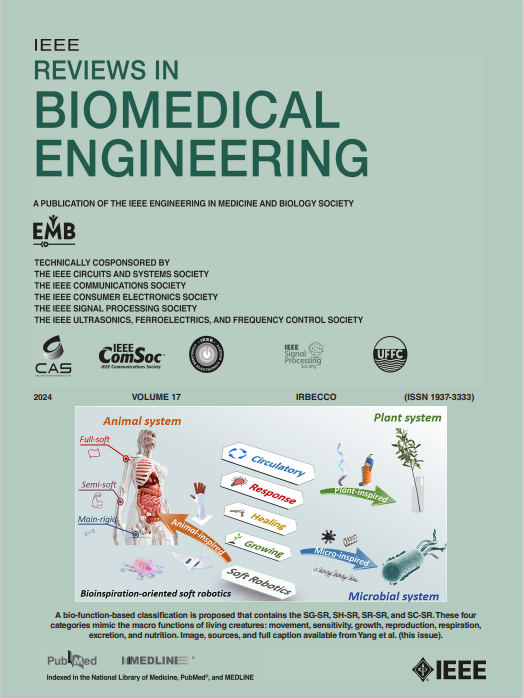纳米技术在液体活检中定量检测循环肿瘤DNA的应用:系统综述
IF 17.2
1区 工程技术
Q1 ENGINEERING, BIOMEDICAL
引用次数: 1
摘要
在液体活组织检查中量化循环肿瘤DNA(ctDNA)的技术可以实时测量癌症进展,对患者护理产生深远影响。测序方法对于常规的护理点监测来说可能过于复杂和耗时,但纳米技术提供了一种替代方案,利用几十到几百纳米大小物体的独特特性。本系统综述旨在确定基于纳米技术的ctDNA检测的所有实例,并评估其临床应用潜力。截至2021年3月23日,搜索了谷歌学者、PubMed、科学网、谷歌专利、Espacnet和Embase/MEDLINE。该综述确定了基于纳米技术的ctDNA检测方法,其中报告了定量测量(如检测限、LOD),并使用了生物相关样品。66份记录符合预定义的纳入标准。LOD范围从10zm到50nM。25份记录的LOD为10fM或更低。基于纳米技术的方法可以为ctDNA诊断的下一波进展提供基础,使其能够在护理点进行分析,但目前尚未在临床上使用。在开发和验证方面还需要进一步的工作;期望在不同的性能度量(例如检测到的序列的数量和产生结果的时间)之间进行权衡。本文章由计算机程序翻译,如有差异,请以英文原文为准。
The Application of Nanotechnology for Quantification of Circulating Tumour DNA in Liquid Biopsies: A Systematic Review
Technologies for quantifying circulating tumour DNA (ctDNA) in liquid biopsies could enable real-time measurements of cancer progression, profoundly impacting patient care. Sequencing methods can be too complex and time-consuming for regular point-of-care monitoring, but nanotechnology offers an alternative, harnessing the unique properties of objects tens to hundreds of nanometres in size. This systematic review was performed to identify all examples of nanotechnology-based ctDNA detection and assess their potential for clinical use. Google Scholar, PubMed, Web of Science, Google Patents, Espacenet and Embase/MEDLINE were searched up to 23rd March 2021. The review identified nanotechnology-based methods for ctDNA detection for which quantitative measures (e.g., limit of detection, LOD) were reported and biologically relevant samples were used. The pre-defined inclusion criteria were met by 66 records. LODs ranged from 10 zM to 50nM. 25 records presented an LOD of 10fM or below. Nanotechnology-based approaches could provide the basis for the next wave of advances in ctDNA diagnostics, enabling analysis at the point-of-care, but none are currently used clinically. Further work is needed in development and validation; trade-offs are expected between different performance measures e.g., number of sequences detected and time to result.
求助全文
通过发布文献求助,成功后即可免费获取论文全文。
去求助
来源期刊

IEEE Reviews in Biomedical Engineering
Engineering-Biomedical Engineering
CiteScore
31.70
自引率
0.60%
发文量
93
期刊介绍:
IEEE Reviews in Biomedical Engineering (RBME) serves as a platform to review the state-of-the-art and trends in the interdisciplinary field of biomedical engineering, which encompasses engineering, life sciences, and medicine. The journal aims to consolidate research and reviews for members of all IEEE societies interested in biomedical engineering. Recognizing the demand for comprehensive reviews among authors of various IEEE journals, RBME addresses this need by receiving, reviewing, and publishing scholarly works under one umbrella. It covers a broad spectrum, from historical to modern developments in biomedical engineering and the integration of technologies from various IEEE societies into the life sciences and medicine.
 求助内容:
求助内容: 应助结果提醒方式:
应助结果提醒方式:


